Brigid’s Cross is widely believed to be a Christian symbol but its origins lie in much older Irish traditions and folklore. It is an ancient Celtic symbol, deeply rooted in pagan mythology and associated with the goddess Brigid.
The origins of Brigid’s Cross can be traced back to pre-Christian Ireland and the ancient festival of Imbolc where communities would gather to honour Brigid with songs, dances, and offerings. Imbolc represented a time of purification, renewal, and the awakening of the earth from its winter slumber.

Brigid’s Crosses were intricately woven from rushes and sometimes straw, consisting of a central square surrounded by four arms at right angles. The cross would adorn the doors and rafters of Irish homes, usually in the kitchen, warding off fire and evil.
Brigid was a life-giving goddess

Brigid of the Tuatha de Danaan, in Irish Celtic mythology, was known as a life-giving goddess, which is why the beginning of Spring with the birth of new lambs and the flowers beginning to bloom again, was associated with her.
Brigid’s influence spanned diverse domains, making her a central figure in Irish folklore and culture. She represented qualities such as creativity, wisdom, healing, and poetry. She was also associated with fire, its productive uses and destructive power.
As the daughter of the mighty god Dagda, Brigid occupied a significant position among the Tuatha Dé Danann.

The ancient Irish people held Brigid in high esteem and regarded her as a powerful deity who played a vital role in their daily lives. As the goddess of fire, Brigid brought warmth and illumination to the hearth, ensuring the comfort and well-being of households.
Possessing the gift of poetry, she also inspired bards and musicians with her creative energy. Furthermore, Brigid’s association with healing made her a patron of physicians and practitioners of herbal medicine.
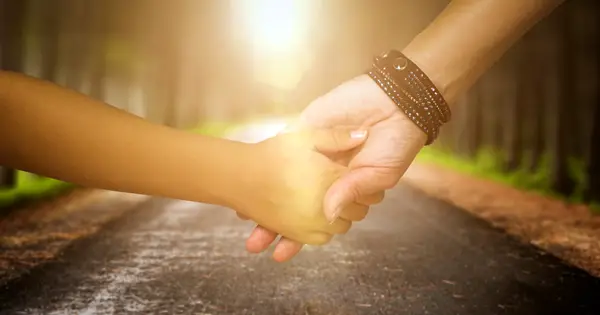
One of the most notable aspects of Brigid’s character was her nurturing and compassionate nature. She embodied the qualities of hospitality, offering solace to weary travellers and protection to those in need.
Brigid became a Christian saint
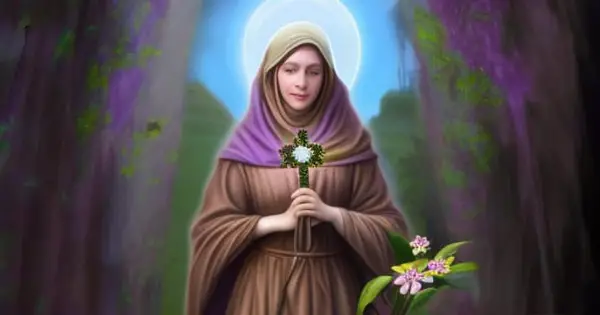
With the introduction of Christianity to Ireland, many pagan deities were assimilated into the new faith. Brigid, being highly revered by the Celtic people, underwent a transformation from the goddess Brigid to St. Brigid, or St. Brigid of Kildare (450-520), one of Ireland’s patron saints.
Many of the attributes of the goddess were transferred to the saint. The Celtic festival of Imbolc was renamed St Brigid’s Day and the making and displaying of Brigid’s Crosses merged with the ‘new’ Christian celebration on February 1st.
People continued to craft the cross from rushes but it acquired new symbolism within the context of the Christian faith. Brigid’s Cross became St Brigid’s Cross or St Bridget’s Cross. St Brigid herself became associated with sacred flames and holy wells in keeping with pagan beliefs.
St Brigid helped a dying man
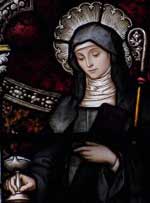
St Brigid is said to have been an early pioneer of Christianity in Ireland. The tale most associated with St. Brigid’s Cross revolves around an encounter between Saint Brigid and a dying pagan chieftain.
As Saint Brigid sat by his bedside, the chieftain’s curiosity was piqued by the woven rushes strewn across the floor. He asked about their meaning, and Saint Brigid seized the opportunity to explain the significance of the cross.
She began weaving the rushes together, forming a simple cross while sharing the story of Christ’s crucifixion. As she spoke, the chieftain’s heart was touched, and he converted to Christianity, receiving baptism before his passing. From that moment, the cross of woven rushes became known as “St. Brigid’s Cross,” representing the power of faith and the potential for conversion and transformation.
St Brigid is still celebrated in Ireland
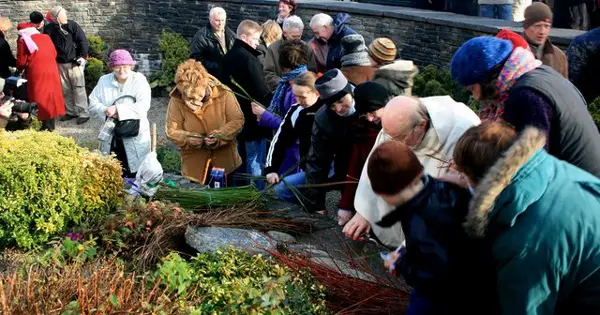
In modern times the feast of St Brigid is still celebrated in parts of Ireland on 1st February.
People weave crosses and display them on their doors and some of the older traditions are still observed. Many people believe that placing a St. Brigid’s Cross above the entrance of a home will protect the household from harm.
The process of making the cross is often a communal activity, with family members or neighbours coming together to craft the symbol.
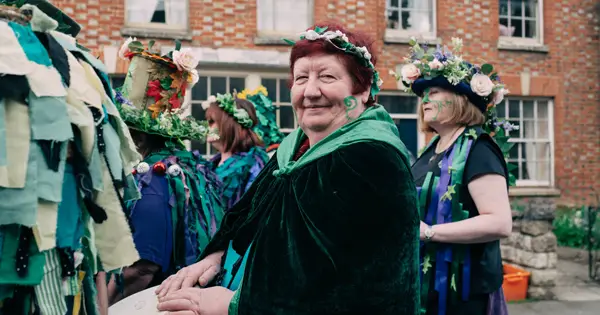
Imbolc has also experienced a remarkable resurgence in recent decades within the neo-pagan community. As modern-day practitioners of neo-paganism seek to reconnect with the natural world and ancient spiritual traditions, Imbolc has captured their imagination as a sacred and meaningful religious holiday.
Both these celebrations foster a sense of belonging and solidarity, as participants come together to honour the Earth, engage in meaningful rituals, and support one another in their spiritual journeys.
Today, Brigid’s Cross stands as a testament to the harmonious blending of cultural heritage and religious devotion, serving as a profound expression of faith and identity for both the Irish people and Christians around the world.
Brigid’s Cross FAQs
Brigid’s Cross is a traditional Irish symbol, typically made from woven rushes, shaped like a cross with four arms of equal length.
Brigid’s Cross represents the Christianisation of an ancient Celtic symbol and is associated with the Irish saint, Brigid. It symbolizes protection, blessings, and warding off evil spirits.
Brigid’s Cross is traditionally made from rushes, which are dried, stripped of leaves, and woven together to form the cross shape.
Brigid is the goddess of several aspects in Celtic mythology, including poetry, smithcraft, healing, and fertility. She embodies the qualities of inspiration, creativity, and nurturing.
St Brigid is known as a patron saint of Ireland and is revered for her Christian piety, charity, and healing abilities. She is associated with various miracles and acts of compassion.
St. Brigid is best known for her role as a patroness of Ireland, her charitable works, and her founding of monastic communities.
The symbols associated with St. Brigid include the Brigid’s Cross, a flame or fire representing her association with hearth and home, a cow or dairy-related items symbolizing her connection to abundance, and a crozier or staff representing her role as an abbess.
St. Brigid’s Holy Well is a sacred site in Ireland, believed to have healing properties. Pilgrims visit the well to pray, leave offerings, and seek blessings and cures for various ailments. It is a place of spiritual significance and devotion.
As the story goes, St. Brigid made a cross to explain the Christian faith to a dying pagan chieftain. The cross she made became a symbol of her teachings and is now known as Brigid’s Cross.
St. Brigid’s Day, also known as Imbolc, has roots in pagan traditions celebrating the beginning of spring. It later became associated with St. Brigid and is now celebrated on February 1st, marking the arrival of longer days and the onset of spring.
St. Brigid’s prayer, known as “The Prayer of St. Brigid,” is a traditional Irish blessing. It is a petition for God’s presence and protection, asking for peace, strength, and guidance.
St. Brigid’s head is said to be interred at the Shrine of St. Brigid in the Cathedral of Kildare, Ireland.
There are various types of Brigid’s Crosses, including the traditional four-armed cross made from rushes, as well as variations using different materials such as straw, fabric, or even metal.
St. Brigid is said to have been born in Ireland, specifically in Faughart, near Dundalk in County Louth.
St. Brigid’s Day is primarily celebrated in Ireland, but it is also observed in other countries with Irish heritage or Catholic communities, such as Scotland, England, the United States, and Canada.
A Brigid’s Cross is traditionally hung in homes to bring blessings and protection. It is often displayed above doorways or in windows, and it is sometimes used in rituals or ceremonies for healing and warding off negative energy.
Here, is a more complicated St Brigid’s Cross – a diamond cross made with rushes twisted onto willow twigs.


